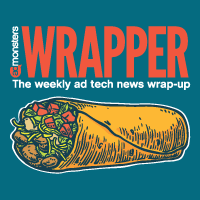More than a decade ago, marketers, researchers, and innovation firms relied heavily on focus group research to vet new product offerings (more than 85% of which fail). But now Madison Avenue and corporate executives are making corporate ethnography the research method of the moment.
Marketers have finally recognized the power inherent in studying consumer behavior in its natural environment. But the crux of the matter rests in one’s ability to translate observations of product usage rituals into actionable plans for product development. Making the link between consumer behavior and what a consumer says he needs and wants is the key step in developing successful products that can broaden a brand and enhance ROI.
While academic-style ethnographic studies have found their way into innovation programs, they weren’t really designed for that purpose. A more flexible process can be modified, depending on your needs and the scope of the program, to 1) determine the key problems with a product or a product category, and 2) develop workable solutions that fulfill consumer needs. When we conduct ethnographic research, our techniques include videotaped product-user brainstorming sessions that capture the way people actually use the product in question. Then, as the consumers discuss the product’s strengths and weaknesses, our designers sketch their ideas for further exploration following the session. Sessions held later in the development process help us evaluate the first crop of new product ideas and identify where they can be optimized.
It might be illustrative to walk through a typical project, in this case the creation of Quaker Oats’ Oatmeal Express, where the objective was to make instant oatmeal more appealing and easier to prepare and eat, at home or on the go, without sweating over a hot pot. The resulting product, a single-serve cup of oatmeal with a cover that requires just water, preferably hot, and a sweetener, has been most successful.
The first step, before consumer encounters, was a series of store visits to explore the category at retail: what competitor packaging looked like on the shelf, the role that signage and merchandising played, etc., all of which was carefully documented.
The consumer ethnographic phase followed, with the help of the client, who recruited product users who allowed us to videotape how they prepared and ate Quaker Oatmeal in their home. As we watched families preparing and eating oatmeal and noted where they stored the product, we discovered what could be improved, what took too much time, what limited people’s ability to eat oatmeal more frequently or to eat it on the go. We found that being a sit-down meal, oatmeal was losing out to doughnuts and danish, which were eaten in the car with a cup of coffee or taken to the office.
The beauty of ethnographic research is that you can apply it to virtually any context or product category. In the case of Frito-Lay Go-Snacks, the market was high-school students, and the key rituals included packing lunch and snacking on the go. Here a mix of photographic and videotaped studies enabled our design team to dive into the world of teens as they snacked while studying, e-mailing, biking, or skateboarding, generally with friends. The research uncovered some interesting problems with available snacks such as potato chips, which are fragile and packed in poorly protective foil bags.
The research showed that key attributes of a snack would include a recloseable, crush-proof, shareable, single-handed-serve package. To accommodate these criteria, our innovation team created a cylindrical, blow-molded container with a snap-on serving cup that also serves as the lid.
Gary Grossman is founder/president of IDI USA (www.IDIusa.com), an Edgewater, NJ-based product strategy and packaging firm.



